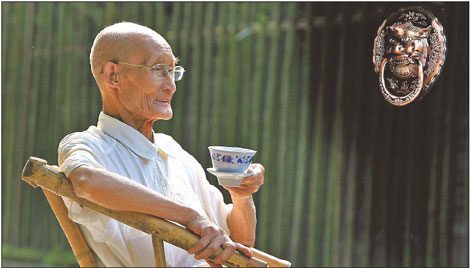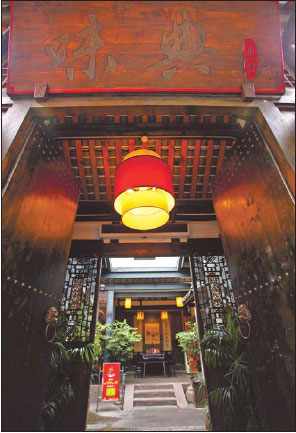Share Your Experience
Fired up for the day
Updated: 2011-01-13 08:09
By Chitralekha Basu and Guo Shuhan (China Daily)
|
Chengdu is a city famed for its laid-back lifestyle, where people like to spend their days in parks or teahouses. Zhu Jianguo / China Photo Press |
Sichuan's damp air and overcast skies help explain this mountain-locked province's famed mind-blowing spicy cuisine. Chitralekha Basu and Guo Shuhan report.
In essence this is a love story. That's how Chengdu-native and food writer Shi Guanghua describes Sichuan cuisine, as we know it today. And like all classic romances, the union of Sichuan's native Chinese prickly ash and pepper, imported from South America around the end of the 17th century, via Europe, could be a challenge to anybody trying to sample it, especially the first-time round.
 |
The taste-bud-tingling, gullet-numbing sensation has now become a metaphor for Sichuan cuisine - famed the world over for its sharp and furious kicks on the palate, threatening to set one's mouth on fire.
As for the people of mountain-locked Sichuan, where the air is damp and the skies overcast on most days, this fiery hotness in their food is a sure-shot turn-on, Shi says.
But that's only half the story. For the "hot" in Sichuan cuisine is not just the lethal punch that might send unaccustomed diners gasping and reaching for a jug of iced water. It can also be experienced in its array of subtly-defined, multi-layered, many-splendored varieties (see sidebar).
|
Kuanzhai Xiangzi is a popular hangout for food-lovers in Chengdu. Niu Shupei / For China Daily |
The tradition of adding spice to food to warm up Sichuan residents, negotiating degrees of dampness all year round, began at least two millennia ago.
Li Shuren, who at 85 is something of a father figure to Chengdu's most-celebrated chefs and food experts, says that elements of Sichuan cuisine can be traced back to the Shang-Zhou era (c. 16th century-256 BC). The earliest evidence of spicy hot cuisine can be found during the Wei Dynasty (AD 220-265), which took a more developed form at the time of the Tang (AD 618-907) and Song (960-1279) dynasties, evolving even further in the early Qing Dynasty (1644-1911).
Legendary Tang Dynasty poets of Sichuan - Li Bai and Du Fu, for example - were seasoned gastronomes. The Sichuanese, as admiring of their men and women of letters as their cuisine, have named some of their native specialty dishes after them.
A dish of dried bean curd is named after the Tang Dynasty poetess Xue Tao, while her fellow writer Su Dongpo from the Song Dynasty lends his name to the braised Dongpo pork. Intellectuals like Guo Moruo have added value to Sichuan cuisine by writing about them, according to Li Shuren.
"Two thousand years ago, when pepper was unknown in Sichuan, people used ginger, garlic, mustard, cornel, locally grown vegetables chong cai and la cai to add spice," Shi says.
The entry of red-hot chili pepper toward the end of 1600s changed all that. The world of piquant flavors has since opened up for the spice-addict Sichuan residents, who believe in embracing anything that tickles their taste buds. Even the Indian curry is trying to make inroads into Sichuan kitchens, Shi says.
Specials

President Hu visits the US
President Hu Jintao is on a state visit to the US from Jan 18 to 21.

Ancient life
The discovery of the fossile of a female pterosaur nicknamed as Mrs T and her un-laid egg are shedding new light on ancient mysteries.

Economic Figures
China's GDP growth jumped 10.3 percent year-on-year in 2010, boosted by a faster-than-expected 9.8 percent expansion in the fourth quarter.

